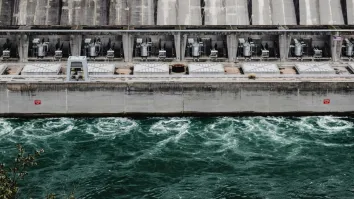
Insurers and pensions fill infrastructure lending gap: AllianzGI
The volume of debt being taken up by institutional investors has steadily grown.
Insurers and pension providers are plugging the lending gap for infrastructure projects, which commercial banks have been shunning for more than a decade because of a stricter regulatory framework that discourages them from holding longer-tenor loans.
“The 2008 global financial crisis significantly changed the infrastructure debt market, which previously relied on commercial banks for about 90% of private infrastructure debt,” Claus Fintzen, chief investment officer for Infrastructure Debt at Allianz Global Investors GmbH (AllianzGI), told Insurance Asia.
“Today, infrastructure borrowers will always check the banking market and the institutional investor market when issuing new debt,” he said in an emailed reply to questions.
Whilst banks still provide most of the infrastructure financing, the volume of debt being taken up by institutional investors has steadily grown, Fintzen said.
“Given their lower volatility and default rates compared with other asset classes, infrastructure assets are particularly well-suited for insurers navigating the challenges of the current economic climate,” he added.
The global demand for infrastructure debt rose 9.6% to $518b (€457b) from a year earlier, with about 27% or $135b (€123b) taken up by institutional investors, according to Infralogic data from March 2025.
Infrastructure finance across the Asia-Pacific region fell 21% in 2024 from a year earlier, according to Infrastructure Journal and Project Finance Magazine. Despite the slump, the use of capital market instruments rose.
Bond issuance for infrastructure finance rose 20% to $66.5b. Renewable energy was the most active sector, attracting $56.5b in finance, followed by the telecommunication industry with $50.5b.
Overall, infrastructure is still one of the fastest-growing asset classes, Fintzen said. Assets under management have been rising 19.7% annually since 2015, Boston Consulting Group said in a June 2024 report.
Increased banking regulation under Basel III and constrained government spending have narrowed traditional lend
ing channels.“Consequently, institutional investors, including pensions and insurance companies who were in need of stable and long duration assets were seizing the opportunity, attracted by the solid investment qualities of infrastructure debt,” Fintzen said.
Investors are mainly attracted to infrastructure debt strategies due to the stable and consistent cash yield these investments provide, he added.
A Global Infrastructure Investor Association report showed that only a quarter of G7 countries think their national infrastructure projects are being delivered effectively. Fintzen said private capital could support insurers and pension providers.
AllianzGI has deployed capital across a wide range of projects. Its Infrastructure Debt platform set up in 2012 has supported more than 160 transactions across greenfield developments, acquisitions, and corporate financing.
Regulatory developments are another tailwind. Whilst Basel III reforms have made long-term infrastructure lending less appealing for banks, some regulators see the lower risk profile of infrastructure debt.
“Whilst regulatory changes may pose challenges, they also open avenues for insurers and other nonbank lenders to capitalise on the evolving landscape of infrastructure financing,” Fintzen said.



















 Advertise
Advertise








